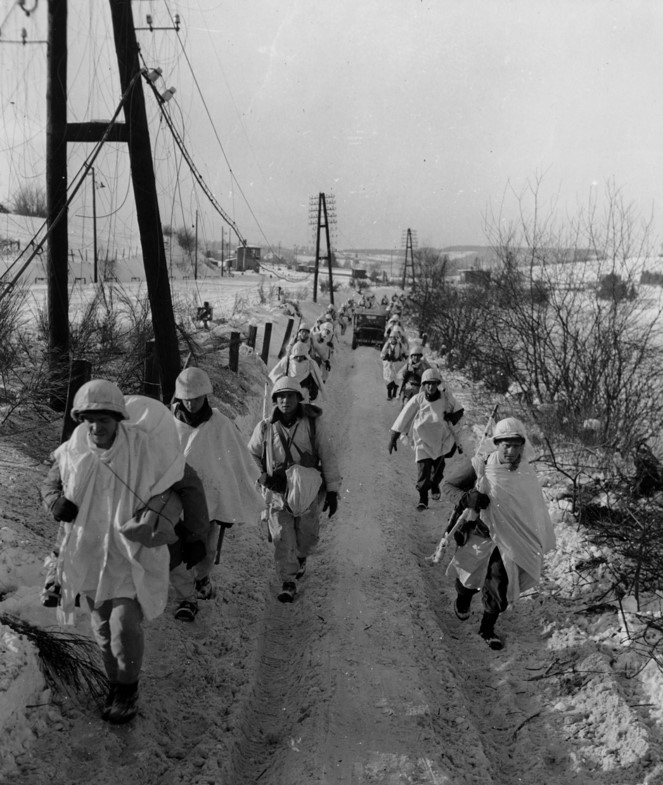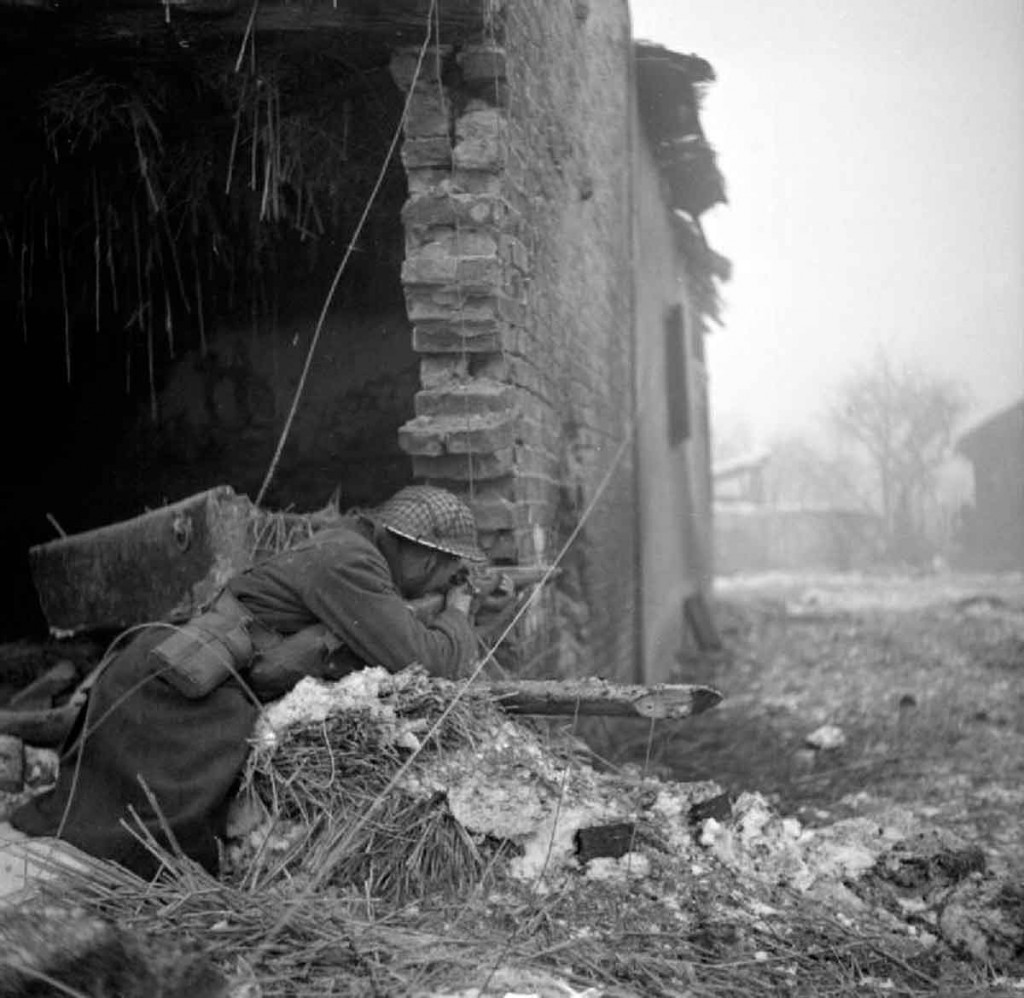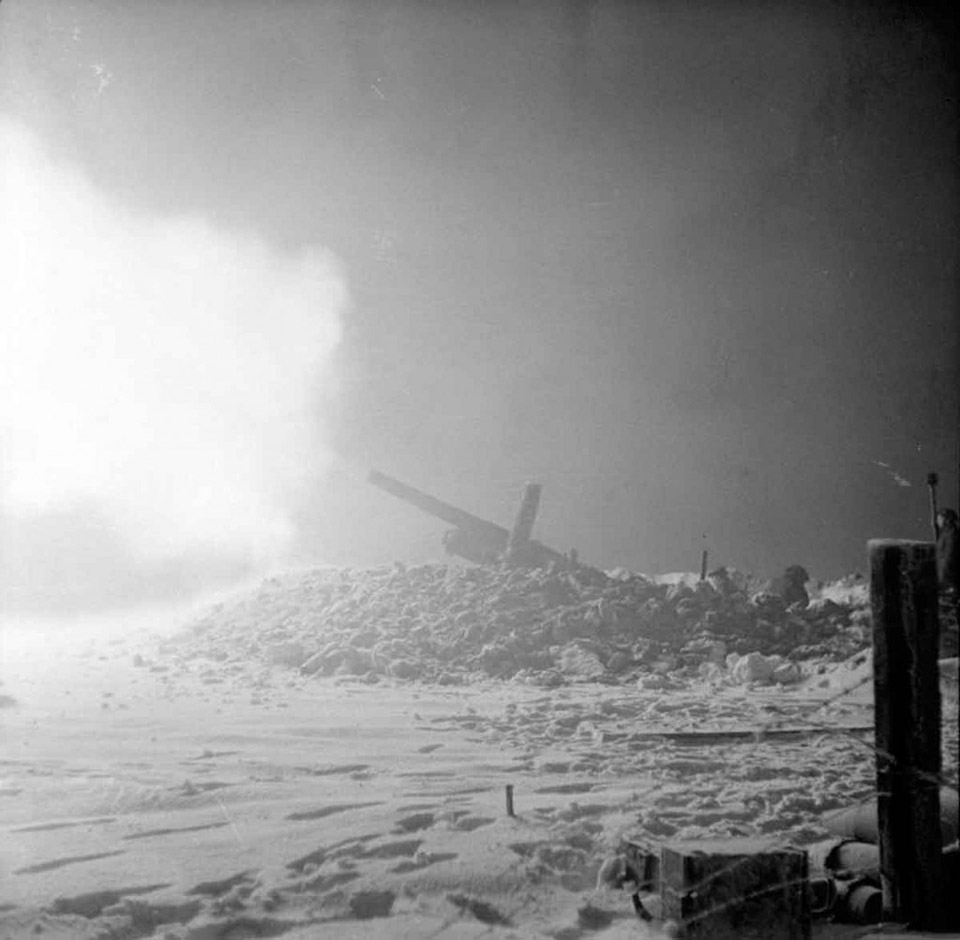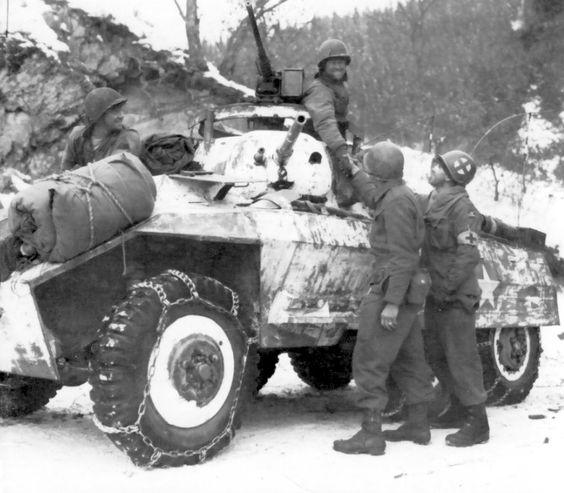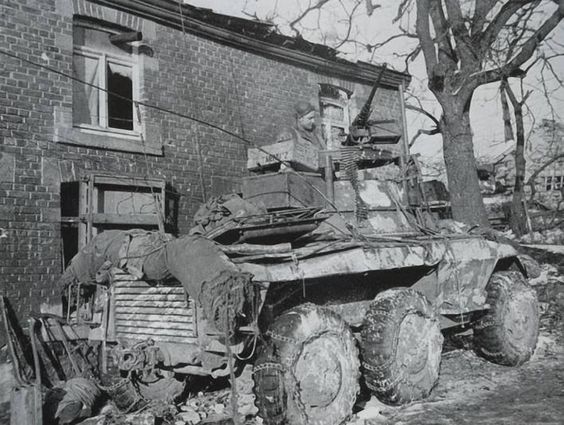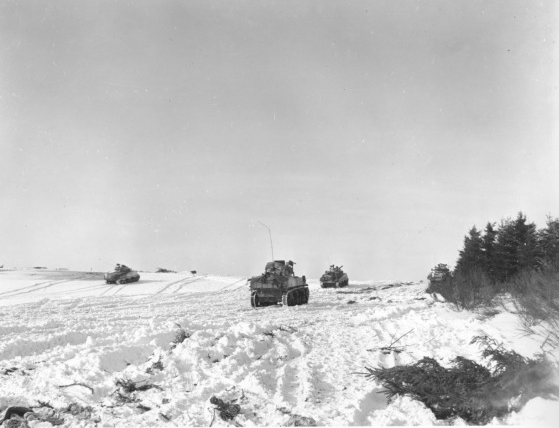Air Operations, CBI
BURMA- 12 10th Air Force B-25s attack troops and supplies at Namtoi.
- More than 40 10th Air Force fighter-bombers attack various targets of opportunity.
- 22 P-47s attack airfields at Anisakan and Nawnghkio.
- 15 P-47s support Allied ground forces near Shadaw and Yenya-u.
- Beginning with launches at 0732 hours, Task Force 38 carrier aircraft attack airfields and other military targets in the Amoy, Swatow, and Hong Kong areas and around Samah Bay, Hainan. One strike element also attacks neutral Portuguese Macao in error.
- Only 21 Japanese aircraft are located on the ground at the airfields that are attacked, and all are destroyed. Only 1 freighter and 1 tanker are sunk (despite claims for 5 freighters), and 1 freighter is heavily damaged.
- VF-4 F6Fs down 8 Japanese fighters over the Samah airfield at Hainan and vicinity between 1015 and 1100 hours.
- A VF(N)-41 F6F downs a Ki-43 'Oscar' fighter near Canton at 1845 hours.
- A VF(N)-90 F6F downs a Ki-44 'Tojo' over Canton at 1900 hours.
- 30 carrier aircraft are lost in combat, mainly to anti-aircraft fire over Hong Kong, and 31 are lost in operational accidents, mostly weather-related.
- 8 341st Medium Bomb Group B-25s attack Wanting. 4 B-25s and 8 14th Air Force P-40s attack a train near Hankow.
- More than 180 fighter-bombers attack vast areas of southern China from the Yangtze River to the South China Sea, with special attention to the areas around Changsha, Muse (Burma), and Wanting.
- A 51st Fighter Group P-51 downs a G3M 'Nell' bomber and another multi-engine airplane off Formosa at 0830 hours.
- A 51st Fighter Group P-51 downs a Ki-43 'Oscar' fighter near Chuichiang at 1315 hours.
Air Operations, East Indies
FEAF B-24s attack airfields in northern Borneo and Halmahera.
[Air Operations, Europe
RAF BOMBER COMMANDEvening Ops:
- 371 aircraft including 320 Halifaxes, 44 Lancasters and 7 Mosquitos of Nos. 4, 6 and 8 Groups are sent to Magdeburg. This is an area raid. Bomber Command claims that it is successful, with 44 per cent of the built-up area being destroyed. No local report is available.
- 17 Halifaxes are lost.
- 328 Lancasters of Nos. 1, 6 and 8 Groups. The target is the Braunkohle-Benzin synthetic oil plant near Leipzig. Much damage is caused to the northern half of the plant.
- 10 Lancasters are lost.
- ;231 Lancasters and 6 Mosquitos of Nos. 1 and 5 Groups attack a synthetic oil plant at BrŁx in Western Czechoslovakia. The raid is a complete success. Speer also mentions this raid as causing a particularly severe setback to oil production.
- 1 Lancaster is lost.
- 138 Lancasters of No. 3 Group attack the benzol plant at Wanne-Eickel. The results are unknown.
- 1 Lancaster is lost.
- 17 Mosquitos are sent to Mannheim and 9 to Hamburg, 23 Halifaxes and 8 Lancasters lay mines off Oslo and in the Kattegat, and there are 55 aircraft involved in No. 100 Group operations.
- 1 Mosquito of No. 100 Group is lost.
GERMANY:
- 61 2nd Air Division B-24s attack an oil refinery at Magdeburg.
- 61 2nd Air Division B-24s attack a munitions plant at Magdeburg (secondary).
- 67 2nd Air Division B-24s attack an oil refinery at Ruhland.
- 138 2nd Air Division B-24s attack a marshalling yard at Dresden (secondary).
- 146 3rd Air Division B-17s attack a marshalling yard ad Dessau (secondary).
- 96 3rd Air Division B-17s attack a chemical plant at Bitterfeld.
- 2 B-24s and 1 of 586 VIII Fighter Command escorts are lost.
GERMANY:
- 311 9th Air Division bombers attack bridges, a motor-vehicle repair center, commuications centers, and various other targets.
ITALY:
- 16 XXII TAC P-47 sorties attack communications targets in the Po River valley.
Air Operations, Formosa
During the night, 63rd Heavy Bomb Squadron SB-24s attack the Okayama airfield, and a specially equipped B-24 mounts an experimental anti-radar reconnaiassance mission over Formosa.
[Air Operations, Marianas
In a shakedown mission by the 504th and 505th Very Heavy Bomb groups of the XXI Bomber Commandís 313th Very Heavy Bomb Wing, 32 of 44 B-29s dispatched attack Maug Island and the airfield on Pagan Island.
[Air Operations, Philippines
- Task Group 77.4 TBMs and FMs support US 6th Army ground forces in the Lingayen Gulf area.
- FEAF B-24s, V Bomber Command B-25s and A-20s, and V Fighter Command fighter-bombers mount punishing attacks against airfields, troops, trains, motor vehicles, lines of communication, and numerous targets of opportunity on Luzon, and lighter attacks against airfields on Negros. A 49th Fighter Group P-38 downs an E13A 'Jake' reconnaissance plane over Balayan Bay at 1805 hours.
Air Operations, Volcano Islands
Despite bad weather, 10 VII Bomber Command B-24s attack Iwo Jima, and 3 of 12 318th Fighter Group P-38 escorts strafe the beach after failing to rendezvous with the bombers.
[Battle of the Atlantic
- The German submarine U-248 is sunk by the combined efforts of the US destroyer escorts Otter (DE-210), Hubbard (DE-211), Hayter (DE-212) and Varian (DE-798) in the North Atlantic.
- U-482 has been operating in the North Channel area since early December. She crippled the escort carrier Thane and damaged a Norwegian tanker on this patrol. While withdrawing from this patrol, she is detected by the ships of the 22nd Escort Group (British ships Amethyst, Hart, Peacock, Starling and Loch Craggie) and destroyed with depth charges.
|
|
Burma
Namhkam is taken by Daniel Sultan's Chinese New First Army which has advanced from Myitkyina along the Ledo Road. The road northeast from Namhkan into China is not yet clear.
[East China Sea
For the second day, aircraft of the US Task Force 38 attack the south coast of China and Hainan Island. Not much damage is done to Japanese shipping, but there is some success against port installations.
[Eastern Front
The 69th Army and II Arm Corps of the 1st Belorussian Front take Radom by storm and push on toward Lodz. The 47th and 61st Armies of the Front attack Warsaw from north and south. The 2nd Arm Army, with the Polish 1st Army, put pressure on the Germans from the west and the east. Some German units succeed in opening a corridor and escaping from Warsaw. In the first 2 days of the offensive the 1st Belorussian Front has advanced an average of 15-25 miles, while the 1st Ukraine Front has advanced 62 miles in 4 days and is now heading for Czestochowa and Krakow
POLANDGerman forces in Poland are facing catastrophe: the XXIV Panzer Corps struggles to bread out of Kielce: parts of the XLVI Panzer Corps are now trapped in Warsaw; and the capture of Czestochowa by the 3rd Guards Tank, 5th Guards and 52nd Armies has put the northern flank of the 17th Army in danger.[MORE]
[Germany, Command
Hitler dismisses Gen Josef Harpe as commander of Army Group A, replacing him with Ferdinant Schörner. Gen Lothar Rendulic assumes command of Army Group North.
[Germany, Home Front
Hitler moves his headquarters in East Prussia to the bunker under the Reich Chancellery in Berlin. There he will spend the remainder of his life.
[Indian Ocean
- In Operation MERIDIAN the British Pacific Fleet (TF 63) leaves Ceylon for the Pacific.
- The British submarine Porpoise is declared lost after failing to return to Trincomalee, Ceylon. The probable cause for her loss is Japanese anti-submarine vessels near Penang. Her entire crew of 73 are lost.
Norway
Norwegian resistance forces gain control of the northern part of their country.
[Pacific
Hong Kong is attacked by US naval planes, which find Japanese air defenses almost nonexistent.
[Philippines
On Luzon in the US XIV Corps sector, a start is made on the construction of bridges over the Agno River to carry heavy materials across. In the same area, still south of the beachhead, the Americans reach the northern slopes of the Zambales Mountains. In the I Corps sector, the 43rd Division tries to take Rosario, but makes little progress against vigorous resitance.
[Western Front
After preparation by the artillery, the British XII Corps under Gen Neil Ritchie, with 2 infantry divisions and 1 armored, launches Operation BLACKCOCK to eliminate the German salient between the Meuse and the Rur, the so-called 'Roermond triangle'.
Near Houffalize, in the middle of the Germans' Ardennes salient, the 41st Infantry Regiment of the US VII Corps, 1st Army, makes contact with the 41st Squadron of cavalry of the US VIII Corps, 3rd Army. While the 2nd Armored Division, VII Corps occupies the part of the town north of the Ourthe River, units of the German 5th Panzer Army continue to resist on their left flank.
The German Ardennes salient has already been reduced to half its former size; starting from Monschau in the north, the front runs west of St Vith to Houffalize, the southeast in the direction of Wiltz and Ettelbruck, where it turns east to Echternach.
In the southern sector of the front, the US 12th Arm Div, VI Corps, 7th Army, opens an offensive agaisnt the Gambsheim bridgehead.
[Images from January 16, 1945
|
|
|
|
|
|
|
|
